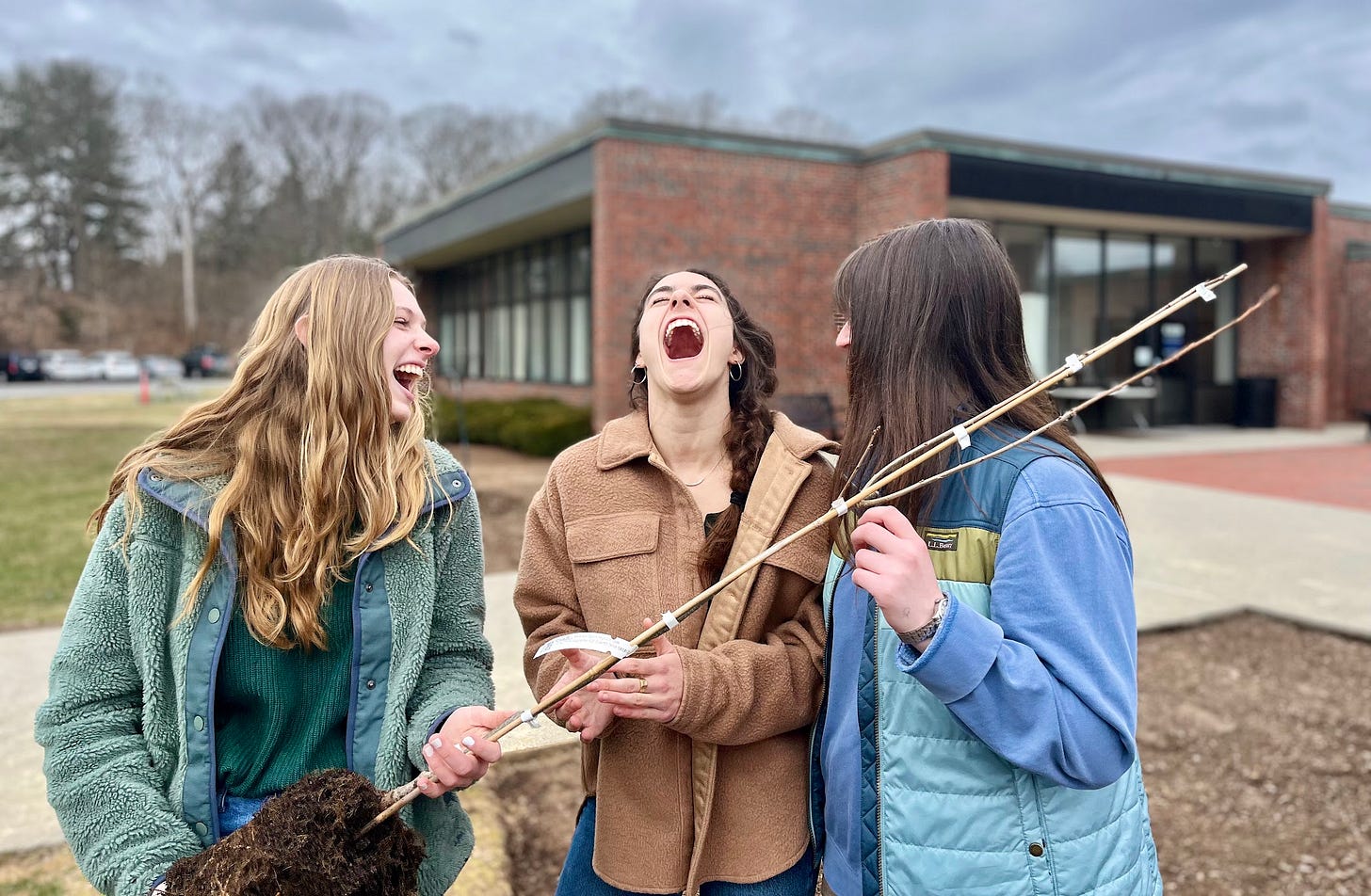Full Circle
From Stump Day to Planting Day
“Fiona, what are you doing next period?”
“Nothing much.”
“Good. Let’s get those trees in the ground.”
“Excellent! I’ll bring friends!”
Twenty minutes later, I was standing in the cool early April air, listening to the trickle of sifted compost and the snick of spades as Fiona and friends prepared the ground for two oak saplings. April is the month of transformation: at the beginning of it, the trees are still bare and sculptural but, by the end, most are in full leaf or riotous flower. If we spend any time outside, we’ll catch some of the restlessness of April, an energy and sense of potential that’s palpable, if hard to define. These three friends certainly felt it, laughing and goofing off while the birdsong chattered above them and the breeze whipped around their hair.
Before too long, the holes had been dug, and we were heeling in the trees. It was a significant moment for multiple reasons. First, it was the closing of the loop for Stump Day. The old dead cherries were gone and two new “kindred spirit” oaks were taking their places. At maturity, these oaks will stand around fifty feet, flanking the walkway by which generations of students will arrive and depart from school. When we plant a tree, we are reaching beyond our daily worries and even our lifespans, guaranteeing something we’ll never get the chance to see. It’s a healthy exercise, humbling and exhilarating in equal measure.
But the moment was also poignant for a second and even better reason: we were only planting these particular trees because of the fine work Fiona had already done. Her Senior Thesis Project, which she’ll defend at our annual Symposium this Friday, involved a full audit of the bird species here on CCA’s campus. Finding the diversity of those species appallingly low, Fiona made specific recommendations about what we could plant to restore the balance. Among her suggestions were, you guessed it, oak trees, which support life in such abundance that they are among the single most ecologically important plants in North America. It was because of Fiona’s research that we’d purchased these particular trees and so, as she piled the dirt over the roots, sifted compost at the base, and watered the saplings in, she was completing a work she herself had started.
The archetypal narrative of American High School is probably 1985’s The Breakfast Club, an iconic movie about a rag-tag group of students that arrive as strangers for Saturday morning detention and ultimately depart as friends. The force that thrusts them together is a shared hatred for the meaningless, unsympathetic educational institution that has failed them. At the end of the movie, composing the essay that serves as their exit ticket from detention, they admit to their teacher, the venomous Mr. Vernon, that what they did to get themselves into detention in the first place was wrong. “But,” they write, “we think you're crazy to make us write an essay telling you who we think we are. What do you care? You see us as you want to see us - in the simplest terms, in the most convenient definitions.”
It’s a great movie, but its diagnosis of the American school system is as depressing as it is insightful. What if we could do better? What if school could be more than a cycle of disembodied experiences suffered under fluorescent lights? As I watched Fiona and her friends share this moment of work—work that would transform the campus and leave behind a legacy of beauty and life—I felt a restless hope. We’re onto something, I thought. And if that something defies convenient definitions, it’s alright with me.
Like what you’re reading here? The best way to support the Classical Roots Program is to spread the word. Help us turn school inside out:




Robin and I are traveling today and very much enjoyed today’s offering! The gift of an economy of words to paint a beautiful mosaic of life or action is a gift from God! Well done, AJ well done!